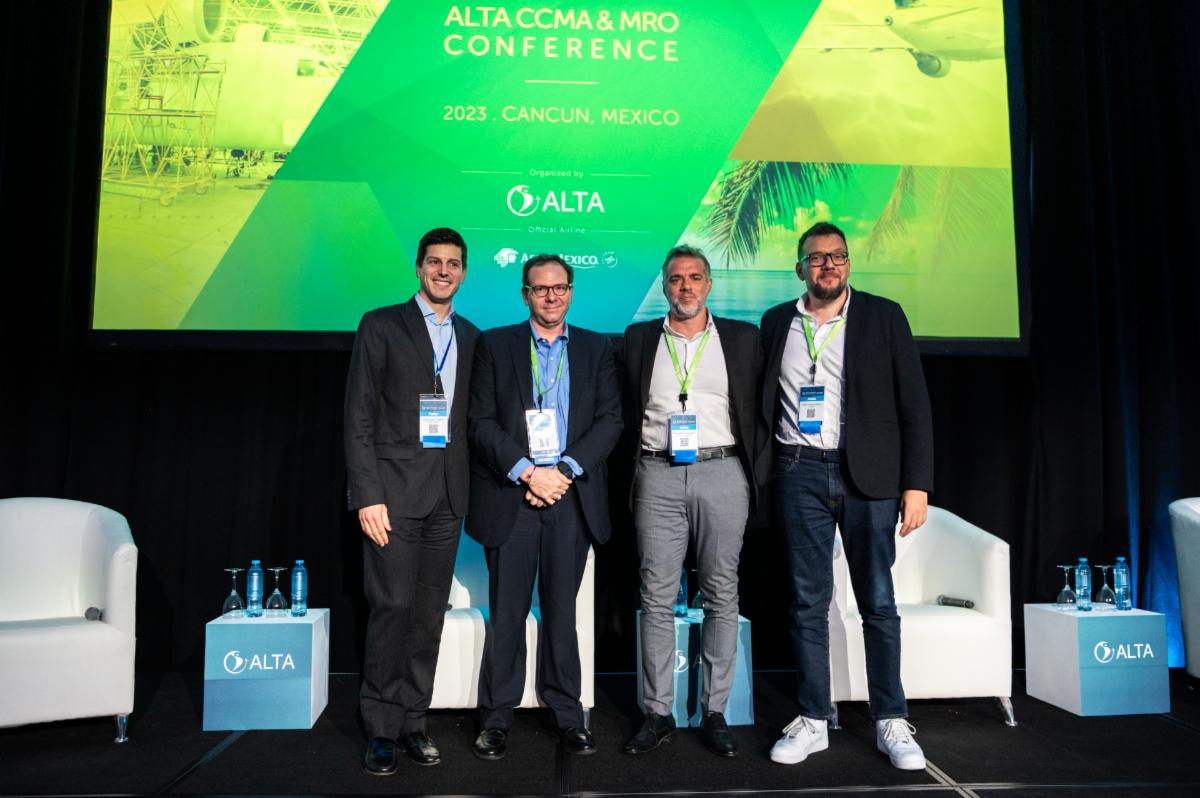Source: ALTA
Albert Perez, SVP of Maintenance at Avianca; Carlos Garcia Martin, Partner at Oliver Wyman; Diego Giorgiadis, Director Técnico at Aerolíneas Argentinas, and Santiago Diago, COO at Aeromexico participated in the Challenges and Operational Trends in Latin America and Caribbean panel during the ALTA CCMA & MRO Conference, an event organized by the Latin American and Caribbean Air Transport Association (ALTA).
Executives highlighted that in 2022 the region achieved an outstanding passenger recovery with some markets growing considerably. One such example is Mexico which, during the pandemic, kept flexible policies in terms of the movement of people and has experienced outstanding passenger growth. Diago further explained that Mexico is the exception in the region when it comes to exchange rate fluctuations, allowing Mexicans to travel internationally and the passenger flow to behave very dynamically.
Giorgiadis explained that in Argentina the scenario is particularly different, as the currency devaluation impacts the movement of international passengers. However, “domestic demand in Argentina was exponential during 2022 and this year has boomed with very high occupancy levels.”
Meanwhile, Perez explained that “Colombia is very strong in terms of passengers and at Avianca we are pleased with how the business plan laid out after Chapter 11 is developing.”
The executives highlighted very positive prospects with sustained growth rates for the next 12 and 18 months. However, they brought to the discussion two major challenges that impact operations: infrastructure and personnel.
In terms of infrastructure, Diago commented that Mexico being in Category 2 “puts a brake on the continued growth of traffic between the United States and Mexico, which is the largest international market in the world if we discount the one within the European Union. On the other hand, “having two airports competing in the same leg is difficult. The operators who have a hub cannot divide it in two. In Mexico in particular, all those involved in this circumstance must sit down to find the best alternative for use in the current instance.
Perez commented that El Dorado in Bogota is a fundamental part of the airline’s growth. Before the pandemic, the airport had 74 operations per hour, a very complex operation. Now, capacity has been reduced and it is estimated, according to a recently published IATA study, that the adequate capacity for the airport’s current conditions is 68 operations per hour and that “we are working with the institutions to make technical decisions regarding whether or not to increase operations.”
On personnel, Giorgiadis commented that Aerolíneas Argentinas made the decision, with the support of the Argentine State, not to reduce its workforce during the pandemic and that during that time the airline trained its personnel and has not been impacted by the lack of manpower in the rebound of operations. However, he noted “we need to expand our workforce and we are seeing the influence of other industries that have changed the way we work. For example, preferences in terms of presence, which is a challenge since it is not possible to repair an aircraft from the home office”. The airline is focusing on universities and technical schools and is sponsoring skilled careers to attract talent.
Diago added that young people are looking for alternatives. Either industries that pay better or other regions that, within the same industry, offer diverse opportunities. Perez said that retaining and training talent will be a challenge for many years to come, “but we have the opportunity to recruit talent from outside the industry and bring in different skills.”
“Competing with compensation in other regions is a big challenge and we are working on it jointly with other important axes such as the career plan / progress within the company, the dialogue with close leaders who care about their teams and the focus on quality of life. Talent management is one of the most important challenges for the coming years. We have to continue working on many axes to retain and also attract talent from other industries, this will give us more competitiveness and capacity for sustainable growth,” Pérez said.

